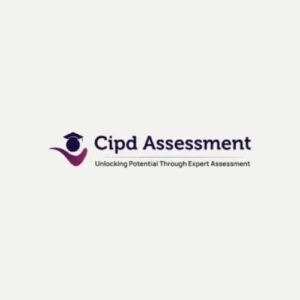Polypropylene multifilament yarn, commonly referred to as PP multifilament yarn, is a versatile material extensively used across various industries. Known for its lightweight nature and high tensile strength, this yarn has gained significant attention, particularly in applications requiring durable and flexible cordage. Whether for industrial, agricultural, or recreational purposes, polypropylene multifilament yarn proves to be an indispensable resource due to its unique characteristics.
Understanding the Composition and Manufacturing Process
Polypropylene multifilament yarns are manufactured from polypropylene, a thermoplastic polymer that is both lightweight and resilient. The production process begins with melting polypropylene granules, which are then extruded into continuous filaments. These filaments are stretched and twisted to form multifilament yarns, enhancing their strength and durability. This process ensures that the yarn achieves the desired balance between flexibility and robustness, making it ideal for cordage applications.
Key Properties of Polypropylene Multifilament Yarn
One of the standout features of polypropylene multifilament yarn is its low density, which contributes to its lightweight nature. This property is particularly beneficial for cordage, as it allows for easy handling and reduced shipping costs. Additionally, PP multifilament yarns are resistant to moisture, chemicals, and UV rays, ensuring longevity even in harsh environments. These qualities make it a preferred choice for outdoor and marine applications.
Applications of PP Multifilament Yarn in Cordage
Polypropylene multifilament yarn is widely used in the production of ropes, twines, and nets. Its high tensile strength and abrasion resistance make it ideal for crafting cordage that can withstand heavy loads and rough usage. In the fishing industry, Polypropylene multifilament yarn is used to make durable nets that endure prolonged exposure to water and sunlight. Similarly, in agriculture, it is used for binding hay bales and creating protective nets.
Advantages of Polypropylene Multifilament Yarn in Cordage
One of the primary advantages of using PP multifilament yarns for cordage is its cost-effectiveness. Compared to other materials like nylon or polyester, polypropylene is more affordable without compromising on quality. Furthermore, its lightweight nature ensures that ropes and nets made from this yarn are easy to transport and deploy. The yarn’s resistance to rot and mildew also adds to its appeal, particularly in humid or wet conditions.
Environmental Benefits of PP Multifilament Yarns
Polypropylene multifilament yarn is recyclable, making it an environmentally friendly choice for cordage. Its ability to be repurposed into new products reduces waste and promotes sustainable practices. Many manufacturers are now adopting eco-friendly methods to produce polypropylene multifilament yarns, further minimizing their environmental footprint.
Innovations in Polypropylene Multifilament Yarn Production
Advancements in technology have enabled the production of PP multifilament yarns with enhanced properties. Manufacturers are now able to create yarns with specific characteristics, such as increased UV resistance or higher tensile strength, tailored to meet the demands of various industries. These innovations have expanded the scope of applications for polypropylene multifilament yarn, making it a more versatile material.
Comparison with Other Materials Used in Cordage
When compared to materials like nylon or polyester, polypropylene multifilament yarn offers distinct advantages. While nylon is known for its elasticity and polyester for its durability, PP multifilament yarn stands out for its lightweight nature and affordability. Additionally, polypropylene multifilament yarns are less prone to absorbing water, ensuring that they remain lightweight even when wet.
Maintenance and Care for Polypropylene Multifilament Yarn Cordage
Cordage made from PP multifilament yarn requires minimal maintenance, which is another reason for its widespread use. To ensure longevity, it is advisable to store the cordage away from direct sunlight when not in use, as prolonged UV exposure can degrade its fibers. Regular cleaning with mild soap and water can help maintain its appearance and performance over time.
Challenges and Limitations of PP Multifilament Yarns
While polypropylene multifilament yarns offer numerous benefits, they do have some limitations. For instance, their melting point is lower compared to other synthetic materials, which may limit their use in high-temperature applications. Additionally, although advancements in UV resistance have been made, prolonged exposure to intense sunlight can still affect the yarn’s durability.
Future Trends in the Use of Polypropylene Multifilament Yarns
The demand for lightweight and strong cordage continues to grow, and PP multifilament yarns are expected to play a pivotal role in meeting this demand. With ongoing research and development, the properties of polypropylene multifilament yarns are likely to improve, making them even more versatile. The incorporation of nanotechnology and biodegradable additives could further enhance their performance and environmental compatibility.
Conclusion: Why Choose Polypropylene Multifilament Yarn for Cordage?
Polypropylene multifilament yarn is undoubtedly a reliable and cost-effective material for lightweight and strong cordage. Its unique combination of properties, including high tensile strength, chemical resistance, and affordability, makes it a preferred choice across various industries. Whether for marine, agricultural, or industrial use, PP multifilament yarns continue to set the standard for quality and performance in cordage applications. By choosing polypropylene multifilament yarn, users can benefit from a material that is not only durable but also adaptable to a wide range of needs.
Frequently Asked Questions (FAQs)
1. Can PP multifilament yarn be customized for specific applications?
Yes, PP multifilament yarn can be customized with specific properties such as enhanced UV resistance, specific colors, or tailored thicknesses based on application needs.
2. Is polypropylene multifilament yarn suitable for high-temperature environments?
PP multifilament yarn has a relatively low melting point (approximately 160°C). It is not ideal for applications requiring exposure to high temperatures.
3. What makes PP multifilament yarn cost-effective?
The production process for polypropylene is economical, and the material itself is lightweight, reducing transportation costs. Its durability also reduces the need for frequent replacements, making it cost-effective in the long run.




